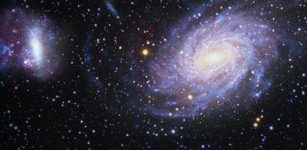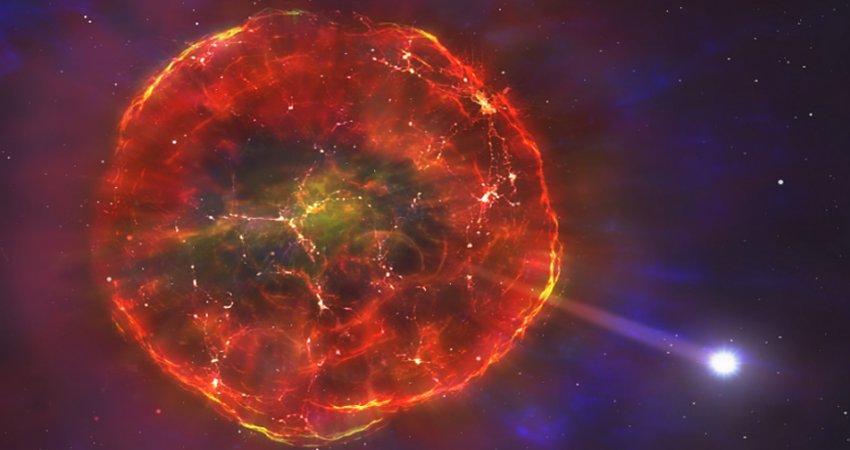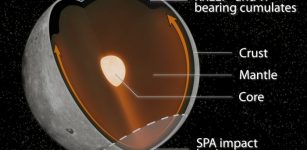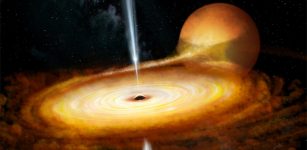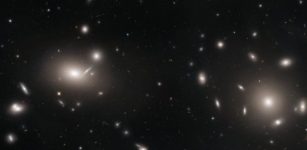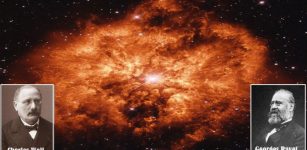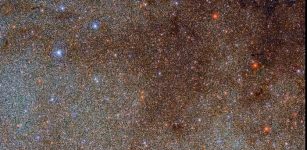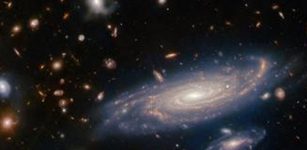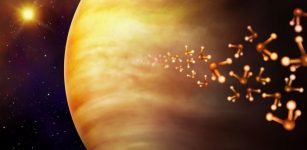Mysterious 12-Billion-Year-Old Signal From The End Of The Universe’s ‘Dark Age’
Eddie Gonzales Jr. – MessageToEagle.com – Today, stars fill the night sky. But when the universe was in its infancy, it contained no stars at all. An international team of scientists is now closer than ever to detecting, measuring and studying a signal from this era that has been traveling through the cosmos ever since that starless era ended some 13 billion years ago.
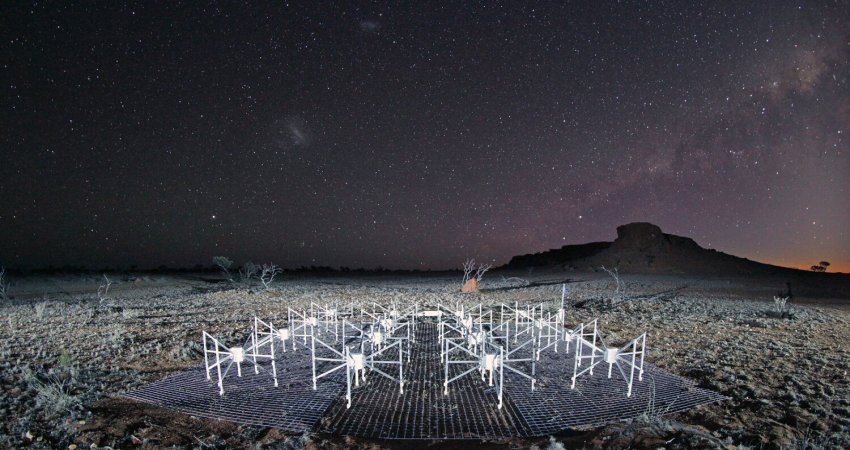
Part of the Murchison Widefield Array at night. Credit: John Goldfield/Celestial Visions
That team—led by researchers at the University of Washington, the University of Melbourne, Curtin University and Brown University—reported last year in the Astrophysical Journal that it had achieved an almost 10-fold improvement of radio emission data collected by the Murchison Widefield Array. Team members are currently scouring the data from this radio telescope in remote Western Australia for a telltale signal from this poorly understood “dark age” of our universe.
Learning about this period will help address major questions about the universe today.
“We think the properties of the universe during this era had a major effect on the formation of the first stars and set in motion the structural features of the universe today,” said team member Miguel Morales, a UW professor of physics. “The way matter was distributed in the universe during that era likely shaped how galaxies and galactic clusters are distributed today.”
Before this dark age, the universe was hot and dense. Electrons and photons regularly snared one another, making the universe opaque. But when the universe was less than a million years old, electron–photon interactions became rare. The expanding universe became increasingly transparent and dark, beginning its dark age.
The starless era lasted hundreds of millions of years during which neutral hydrogen —hydrogen atoms with no overall charge—dominated the cosmos.
“For this dark age, of course there’s no light-based signal we can study to learn about it—there was no visible light!” said Morales. “But there is a specific signal we can look for. It comes from all that neutral hydrogen. We’ve never measured this signal, but we know it’s out there. And it’s difficult to detect because in the 13 billion years since that signal was emanated, our universe has become a very busy place, filled with other activity from stars, galaxies and even our technology that drown out the signal from the neutral hydrogen.”
The 13 billion-year-old signal that Morales and his team are after is electromagnetic radio emission that the neutral hydrogen emanated at a wavelength of 21 centimeters. The universe has expanded since that time, stretching the signal out to nearly 2 meters.
That signal should harbor information about the dark age and the events that ended it, Morales said.
When the universe was just 1 billion years old, hydrogen atoms began to aggregate and form the first stars, bringing an end to the dark age. The light from those first stars kicked off a new era—the Epoch of Reionization—in which energy from those stars converted much of the neutral hydrogen into an ionized plasma. That plasma dominates interstellar space to this day.
“The Epoch of Reionization and the dark age preceding it are critical periods for understanding features of our universe, such as why we have some regions filled with galaxies and others relatively empty, the distribution of matter and potentially even dark matter and dark energy,” said Morales.
The Murchison Array is the team’s primary tool. This radio telescope consists of 4,096 dipole antennas, which can pick up low-frequency signals like the electromagnetic signature of neutral hydrogen.

Kangaroos at the Murchison Widefield Array. Credit: MWA Collaboration/Curtin University
But those sorts of low-frequency signals are difficult to detect due to electromagnetic “noise” from other sources bouncing around the cosmos, including galaxies, stars and human activity. Morales and his colleagues have developed increasingly sophisticated methods to filter out this noise and bring them closer to that signal. In 2019, the researchers announced that they had filtered out electromagnetic interference—including from our own radio broadcasts—from more than 21 hours of Murchison Array data.
Moving forward, the team has about 3,000 hours of additional emission data collected by the radio telescope. The researchers are trying to filter out interference and get even closer to that elusive signal from neutral hydrogen—and the dark age it can illuminate.
Written by Eddie Gonzales Jr. – MessageToEagle.com Staff

